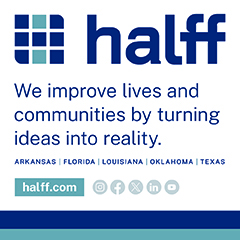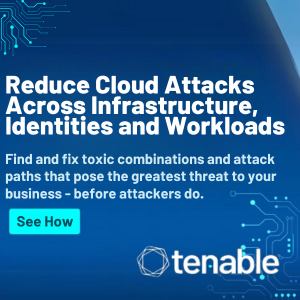Federal procurement is getting a major makeover. Big changes have occurred, and more are on the horizon. Companies that sell into the federal marketplace definitely need to carefully monitor what is happening.
A couple of months ago, the General Services Administration (GSA) unveiled a sweeping initiative called the OneGov Strategy. Since then, several new enterprise contracts now exist with large vendors.
This new OneGov program is an enterprise-wide procurement strategy currently dedicated exclusively to technology and IT related services. The program covers enterprise purchases for software, cloud services, cybersecurity, and IT infrastructure. No non-IT type offerings are included at this time.
The program was designed to transform how agencies buy technology and IT related services but also to obtain better deals for the federal agencies. Announcements have said the program’s stated mission is designed to “modernize governmentwide IT purchases” by centralizing agreements with Original Equipment Manufacturers (OEMs) and setting standardized pricing,
Instead of individual, agency-by-agency buying, the GSA now can, and will, make enterprise purchases as a unified enterprise and negotiate direct deals with major manufacturers and vendors to secure deep discounts.
This shift from legacy, siloed procurement channels to a coordinated, government-wide buying engine designates a pivotal change and the new procurement method will impact all vendors. However, it is the small and mid-size companies that will likely be impacted most.
The GSA isn’t just restructuring procurement – it’s launching an outreach effort for what it wants. Here are the types of enterprise solutions the GSA is currently seeking:
Software and Cloud-Based Tools
The OneGov rollout began with commercial software and cloud services—such as agreements with Microsoft, Google Workspace, Adobe, Oracle, Salesforce, Elastic, DocuSign, and Amazon Web Services. All these contracts were negotiated with deep, pre-negotiated discounts, streamlined terms, and embedded security standards. It appears that others might be also considered.
Cybersecurity Services
The GSA is expanding OneGov into cybersecurity services. Security provisions and ensuring baseline protections will be part of every deal. For example, the cybersecurity workforce platform Cyberstar is already accessible through GSA Advantage in alignment with OneGov’s standards, which support compliance automation and emphasize secure, scalable solutions. Other cybersecurity firms should be reaching out to the GSA.
Hardware, Infrastructure, Platforms, and Beyond
GSA will broaden OneGov beyond software and eventually include other enterprise-grade services, making it the governmentwide hub for shared IT solutions.
The launch of USAi is the federal government’s broader push to modernize its technology infrastructure and evaluate cutting-edge tools before full-scale implementation. While the concept may be reasonable, this is a significant detriment to companies not selected to be included on the testing platform.
Non-IT offerings are not yet included in the OneGov program but there is speculation that these types of products and services could eventually be pulled into the program. Whether this type of enterprise opportunity is available soon for other products and services or not, the GSA will be involved in almost all agency purchasing in the future.
The GSA has made promotional information available for small and mid-sized IT vendors, but it is all in written information. In the past, the GSA has had designated employees available to help small and minority firms. There is nothing that indicates this type of assistance is available at this time, but that could change.
Small and mid-size firms can begin to participate through the IT Vendor Management Office (ITVMO) website, fact sheets, and industry questionnaires. The agency wants vendors to know how to plug into this enterprise-wide buying model.
Now, moving to what has happened since the initial launch of OneGov, here’s what has happened most recently.
The federal government now has an automated platform for federal agencies to test and explore innovative artificial intelligence (AI) technologies. Agencies are urged to do that before adopting and integrating AI in government systems. The new digital platform, titled USAi, is designed to provide agencies and government officials with a workspace for collaboration with the nation’s top AI models, including Claude, Gemini, OpenAI and Meta.
The agency’s deal with Anthropic, the creators of Claude and Enterprise, will provide the company’s advanced AI models to the GSA at a nominal fee across all branches of government. Joining Google, OpenAI and Meta’s AI models, Claude will be one of the initial four AI systems available.
Several additional models were considered for USAi on launch, including Amazon, Cohere, Mistral AI, xAI, Stability AI and AI21 Labs, but these companies were not mentioned in GSA’s information release, and they do not appear to be available on the site.
The GSA has signed agreements with cloud and information technology companies, Oracle and Docusign, to further advance cost savings and efficiency across the federal government.
The GSA says this is a program developed through the Trump administration’s government efficiency program. Agency officials anticipate the AI tools will not only reduce costs, but will also streamline AI integration in federal, state and local government systems. That significant sentiment begs the question of whether the federal government is going to open and encourage state and local governments to use its new purchasing program. Most believe this will not happen, but the GSA statement is somewhat alarming.
There are many questions and not many answers yet. What other types of enterprise programs does the federal government intend to create? Current information says that agencies are not mandated to go through the GSA programs, but if they elect not to do that, an exemption will be required.
Quick bit of advice to technology firms…here’s how to get started:
- You must have an IT-related offering that fits the OneGov program?
- You must obtain a GSA MAS contract through the GSA agency.
- Complete ITVMO OneGov industry questionnaire which is found online.
- Prepare to present enterprise-wide pricing and compliance.
- Cultivate federal agency interest or not. This is optional.
- Stay engaged with GSA and OEM partners.
It is a bit too early to provide an abundance of advice, but the SPI Team will be able to do that soon. Changes are currently occurring so rapidly, guidance will be more relevant with additional information. Until then, stay tuned in with Government Market News and Strategic Partnerships, Inc’s weekly publications for more breaking news on government procurement news.
Photo by Pixabay













